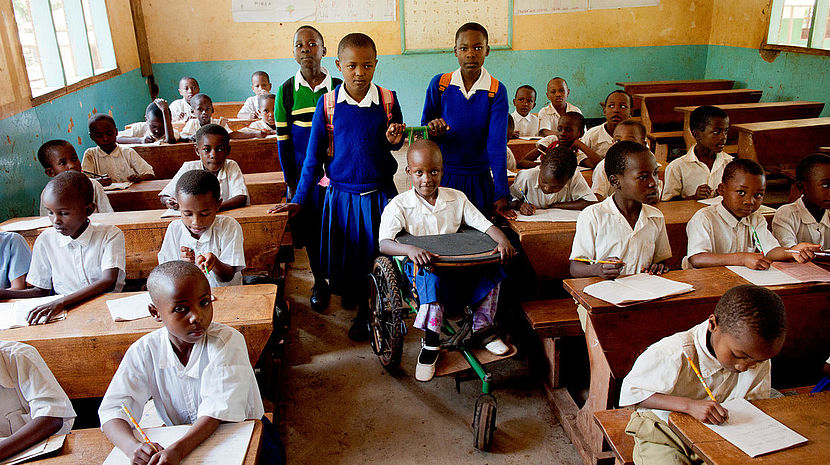08.07.2015 The hope of having inclusive, equity and quality Education

On 6 and 7 July the Oslo Summit on Education took place, with an agenda which gathered high-level representatives from Governments, Civil Society and Private Sector from all over the world.
Equity was the topic of the first session, in which the rights of children with disabilities to be included in Education were raised by all of the speakers. Nafisa Baboo, Senior Advisor on Inclusive Education from Light for the World and Board Member of the Global Campaign for Education, highlighted and welcomed the fact that inclusion is part of Goal 4 of the Open Working Group proposal for Sustainable Development Goals, which has been the basis of the discussion for the final SDGs that will be established in September. However, there is still a need to establish indicators that can take into consideration the needs of boys and girls with disabilities, as well as to ensure a proper financing mechanism committed to achieve these goals. The conference in Addis Ababa on Financing for Development will determine the viability for achieving the SDGs, so that Governments and main stakeholders on International Cooperation need to demonstrate a real financing support in order to achieve equity, growth and sustainability.
Communication and new technologies have demonstrated its added value to support development. Regarding Education, programmes such as Minecraft specialized in Education have developed the capacities of students, included in the second session of the Summit due to its success. Information and Communication Technologies (ICT), internet and applications have been also presented in Oslo demonstrated its added value for children. However Jo Bourne, Chief of Education of UNICEF, emphasised that ICT is only 10 % of Education, while 90% is people. ICT is a tool that supports teachers and students to develop their skills. She also mentioned the need of including accessibility as one of the standards for ICT, allowing the access to technology to children with disabilities.
According to the last report of UNESCO, last year 1 million children were out of school due to natural hazards and armed conflicts: the prolonged war of Syria and the earthquakes of Nepal are two examples of critical situations around the world, in which children have to face the most vulnerable situations. In total, there are 59 million children who are not practicing their Human Right to Education, most of them children with disabilities. Despite this fact, only 1% of the Humanitarian Aid goes for Education. In addition, schools during armed conflicts can become a target more than a safety place, such as the attack to the Garissa University College of Kenya.
Oslo Summit Education is a unique opportunity to strengthen the partnership between Governments and Civil Society in order to ensure that every boy and girl have access to quality Education. Much more needs to be done. We need coordination between stakeholders; we need proper funding that allows the achievement of the SDGs; we need political will. Gordon Brown, UN Special Envoy for Global Education and former Prime Minister of the United Kingdom, said that we need hope to believe that we can make that access to school is a reality for every child. My hope is that we can turn words into actions, so boys and girls can enjoy of their right to Education.
The Summit had as final result the Oslo Declaration, with one reference to children with disabilities.
To hear the inputs from the speakers during the Summit, click here.